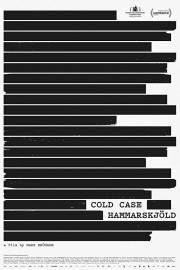Cold Case Hammarskjöld
The film begins with an animated look at a plane crash. We don’t really see the crash, but hearing it with some images is impactful at the start of this film. Plus, since the film deals with what people saw vs. what people were told, it makes sense that we don’t see the crash- how much can we trust of the official story?
We next see our director, Mads Brugger, as he is explaining to a secretary, who is writing out the narrative of Brugger’s documentary. That documentary is an exploration into the death of UN Secretary General, Dag Hammarskjold, back in 1961. He died in a plane crash in Africa, but there have always been questions about whether the crash has been accidental, or an assassination. Brugger is looking to learn more, and get a modern investigation going.
The question of what really happened looms over even the final minutes, as Brugger seems to have come upon culprits in South Africa’s South African Institute of Maritime Research, (SAIMR), which sounds more innocuous than it might have been. Allegedly a mercenary operation in league with the CIA and MI-6, SAIMR is given a figurehead throughout the film in Dr. Keith Maxwell, who dressed in all-white, and was not a medical doctor. Documents about SAIMR made their way into public consciousness during the Truth and Reconciliation Commission in 1998- which explored crimes during apartheid- that might have shed light on Hammarskjold’s death, but trying to find anyone who will discuss SAIMR on the record is tricky for Brugger and Goran Bjorkdahl, whose father received what was, allegedly, a piece of the plane Hammarskjold was in when he was killed. This is a film for conspiracy nuts; one of the most fascinating parts of this film, though, is how, the more Brugger and Bjorkdahl uncover, the less certain we become of what the truth may well be in this story. What they’re uncovering feels like lunacy, but by the time we hear from someone who claims to have worked at SAIMR, it still sounds crazy, but our feelings on the matter feel like truth being discovered.
Brugger’s best exploration of the documentary medium and form, what he brings that is so compelling as a film viewer, is his own journey to solve Hammarskjold’s death is intertwined with the investigative journalism he’s doing. The scenes where he is dictating to his secretary give us an emotional connection to both the story of Hammarskjold’s death, what might have gotten him killed, and Brugger’s looking into it, that is very different from what most documentaries would do. It sucks you in, and informs you of pieces in history you may not have been familiar with before, in a way that we haven’t really seen before in this type of historical documentary.










